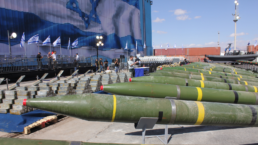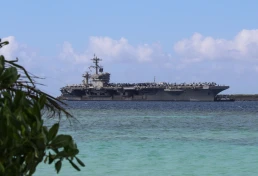What’s ambiguous about Israel’s nuclear policy is not whether the country has these weapons, but how it plans to use them.
By Arvind Dilawar, The Progressive
On September 22, 1979, U.S. surveillance satellite “Vela 6911” detected a double flash of light in the Indian Ocean midway between Africa and Antarctica that appeared to be consistent with the detonation of a nuclear weapon. As researchers with the Federation of American Scientists (FAS) note in their paper, “Israeli Nuclear Weapons, 2021,” U.S. intelligence at the time of “the Vela incident” believed the double flash to be an Israeli nuclear test, conducted with logistical support from the Apartheid-era South African government. A panel assembled by President Jimmy Carter, however, rejected this conclusion based on a premise that the Administration knew to be false, but did not want to challenge politically—that Israel did not possess nuclear weapons.
Israeli “nuclear ambiguity,” its lack of official confirmation or denial that it possesses nuclear weapons, persists to this day. Nevertheless, as of 2021, researchers estimate that the country possesses ninety nuclear warheads, capable of being delivered by aircraft, land-based ballistic missiles, and sea-based cruise missiles. Israel is reserving these weapons for “the Samson Option”: an all-out assault on the civilian population centers of its opponents.

Researchers have been able to reconstruct the history and current status of Israel’s nuclear program through declassified materials, as well as statements by Israeli politicians and officers themselves.
“Israeli officials do not explicitly discuss the country’s nuclear doctrine, but the country still needs to implicitly signal the circumstances under which it would use nuclear weapons for deterrence purposes,” says Kelsey Davenport, director of nonproliferation policy at the Arms Control Association, which advocates for nuclear disarmament. “Reading between the lines of statements from former and current officials and military planners provides insights into how the country may use its nuclear weapons, such as the Samson Option.”
Recent Posts
‘People in Venezuela Can Oppose the Government But Still Reject US Intervention’:
January 18, 2026
Take Action Now CounterSpin interview with Michelle Ellner on Venezuela invasionBy Janine Jackson, FAIR Janine Jackson interviewed CODEPINK’s…
Social Strikes: Confronting ICE and Resisting Authoritarianism
January 17, 2026
Take Action Now An in-depth discussion with Jeremy Brecher on the strategy, potential, and challenges of mass social strikes following the Minnesota…
Israeli Ban on 37 Aid Organizations Expected to Have Devastating Impacts Across Palestine
January 16, 2026
Take Action Now Aid organizations say Israel’s recent ban of 37 groups has dealt a severe blow to humanitarian work across Palestine. In Gaza, it…
U.S. Surging Military Assets To the Middle East To Prepare for War With Iran After Trump Postpones Attack
January 16, 2026
Take Action Now Reports claim that Netanyahu asked Trump to delay the attack as Israel wants more time to prepare for counterattacksBy Dave…




